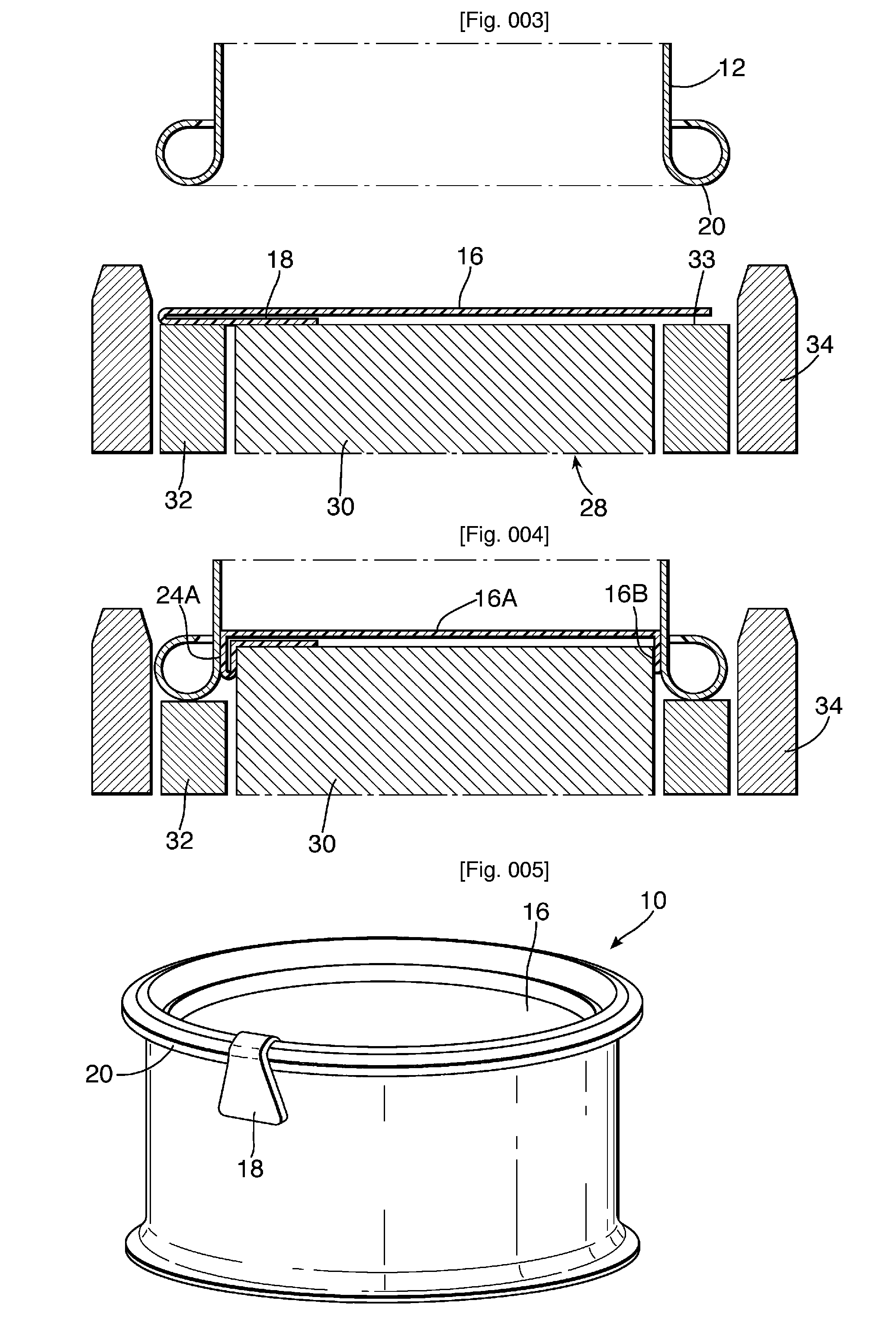Packaging Can and Method and Apparatus for Its Manufacture
a technology for packaging cans and cans, applied in the field of packaging cans for foodtuffs, can solve the problems of inherently slow process, long manufacturing time for manufacturing ring and fixing the lidding material to this ring, and substantial material waste, so as to reduce the incidence of wrinkles in the lidding material and facilitate the opening
- Summary
- Abstract
- Description
- Claims
- Application Information
AI Technical Summary
Benefits of technology
Problems solved by technology
Method used
Image
Examples
first embodiment
[0046]In the following figures, the elements analogous to those of the first embodiment are designated by identical references.
second embodiment
[0047]FIGS. 5 and 6 represent the invention. This embodiment differs from the previous one in that the tab 18 extends over the outside of the can body 12. The manufacturing process of this embodiment is represented in FIGS. 7 and 8. Unlike the process of FIGS. 3 and 4, the lid is centred on the support 28 with the tab folded back. During the stage of drawing the lid 16, the centring sleeve 34 allows the tab 18 to be guided in such a way that it extended along the can body 12.
third embodiment
[0048]FIG. 9 shows the invention, in which the sealing surface 24A is inclined at an angle of 45°. The tab in its folded and unfolded positions corresponds to that shown in FIGS. 1 and 5. The tab could be pre-folded and then the lidding material placed on the punch. Alternatively, the punch could be allowed to fold the tab, although care is then required to avoid the tab bonding to the top of the curl of the can body.
[0049]In a small scale trial, the embodiments of FIG. 2 (vertical seal) and FIG. 9 were tested by a random group for openability. The vertical sealing surface of the cans of FIG. 2 was considered by many of the group to be unconventional and so individuals had to decide on a new opening technique. Two separate sample batches of cans according to FIG. 2 were tested by the group. In the first batch, 61% of the tabs stayed attached and 31% of the ends were removed completely. In the second batch, only 17% of tabs stayed attached and 8% of the ends were removed completely. ...
PUM
| Property | Measurement | Unit |
|---|---|---|
| thickness | aaaaa | aaaaa |
| angle | aaaaa | aaaaa |
| surface angle | aaaaa | aaaaa |
Abstract
Description
Claims
Application Information
 Login to View More
Login to View More - R&D
- Intellectual Property
- Life Sciences
- Materials
- Tech Scout
- Unparalleled Data Quality
- Higher Quality Content
- 60% Fewer Hallucinations
Browse by: Latest US Patents, China's latest patents, Technical Efficacy Thesaurus, Application Domain, Technology Topic, Popular Technical Reports.
© 2025 PatSnap. All rights reserved.Legal|Privacy policy|Modern Slavery Act Transparency Statement|Sitemap|About US| Contact US: help@patsnap.com



